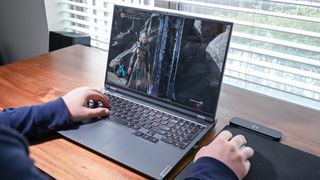Best gaming laptops under $1,500 in 2024
Here are the best gaming laptops under $1,500
Gaming laptops under $1,500 might be budget-friendly, but that doesn't necessarily mean you'll be compromise the laptop's capability of running the latest titles at medium to high settings.
These devices might not be the turbo-clad behemoths of higher price brackets, but thanks to technologies like Nvidia's DLSS performance and visual enhancing tools, you can still breeze your way through your Steam library with impressive results. At this price bracket, you're likely to secure a great all-around performer with a solid CPU and GPU capable of taking on the latest AAA titles with solid visuals in tow.
If you won't accept anything less than pushing every slider to the right on your graphics menus then why not check out our list of the best gaming laptops for a wider selection of top-notch gaming notebooks. And if your budget is tight, there are always some top entry-level options to choose from in our best cheap gaming laptops or you can peruse the best handheld gaming devices.
However, if you're looking for gaming goodness without breaking the bank, read on for our selection of the best gaming laptops under $1,500 in 2024.

Rami reviewed and tested dozens of gaming laptops over the span of 6+ years. He gets to game on a new machine every time one comes in for review, so he's an expert on what works and what doesn't for any budget. Finding a 4 to 5-star gaming laptop for under $1,500 is getting more difficult as the years go on, but there are still enough out there to curate a list like this. Rami knows that budget shouldn't compromise on quality, and that you deserve the most for your coin. Extensive testing and hands-on has taught Rami which are the best gaming laptops under $1,500.
The Quick List

Best overall
Lenovo Legion 5 Pro is the perfect gaming laptop for the price, boasting powerful RTX 4070-performance, a gorgeous display, sturdy build, and an exceptional keyboard for the average gamer.
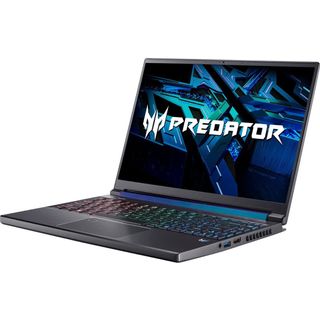
Best budget
The Acer Predator Triton 300 SE is where performance and affordability meet. Packed into this 14-inch body is all the gaming performance you need to jump-start most AAA games.
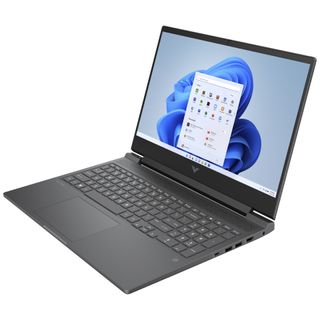
Best budget for 40-series
The HP Victus 16 is for anyone seeking to avoid the impossible cost of high-end gaming laptops. At just $800, it surprised us with its solid framerates, quality display and excellent cooling.
▼ Read more below
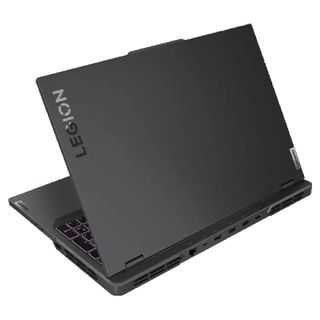
Best battery life
With a surprisingly high quality display, great performance metrics through productivity and gaming, alongside a solid feeling exterior make, this highlights the best of both worlds.
▼ Read more below

Best Intel
Are you looking for a 40 Series Nvidia GPU without breaking the bank? Then we highly recommend the MSI Katana 15, which offers a powerful Intel Core i7 CPU, and RTX 4070, which delivers powerful overall graphics performance.
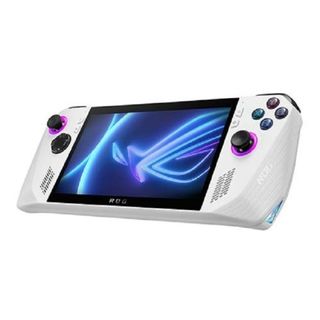
Best for handheld gamers
While the Asus ROG Ally may not technically be a gaming laptop, its Windows 11 OS and excellent performance metrics make one thing clear: This is a great gaming laptop at heart.
Best overall





Specifications
Reasons to buy
Reasons to avoid
The Lenovo Legion 5 Pro is the best sub-$1,500 gaming laptop out there and it's no contest. It boasts superb RTX 4070 performance that outperforms its many competitors without a sweat, alongside excellent productivity scores to satisfy your needs in everyday tasks.
On our Borderlands 3, Far Cry 6, and Red Dead Redemption 2 tests, the Legion 5 Pro averaged 110, 97, and 78 frames per second, respectively. That means you’ll be able to make plenty use of its 165Hz screen.
Lenovo also packed in one of our favorite keyboards; our reviewer even called it her keyboard soulmate. By giving the arrow keys a little nook, featuring its own touchpad, and having a wonderful 1.5-mm of key travel, it stands out and excels as one of the best.
While the Legion 5 Pro doesn't have the best display, it is surprisingly high quality for a laptop at this price point. The 16-inch, 2560 x 1600, IPS, 165Hz display managed DCI-P3 coverage of 82.4% and averaged 319 nits of brightness. At this cost, these scores are often rare.
A surprisingly powerful audio system backs up that pretty display. There are moments when it sounds a bit hollow, but it’s quite loud and punchy. As long as you’re not an audiophile like some of us at Laptop Mag, you’ll get along fine with the Lenovo’s bottom-firing speakers.
With an AMD Ryzen 7 7745HX processor, 16GB of RAM, and a 1TB SSD, this laptop excels with a Geekbench 6 score of 13,063, alongside taking only 4 minutes and 5 seconds to convert a 4K video into 1080p resolution through the HandBrake app. And with the final cherry on top is the SSD’s 2,150 megabyte-per-second transfer rate.
Every aspect of the Legion 5 Pro’s price-to-performance ratio is unbelievable.
See our full Lenovo Legion 5 Pro review.
Best budget

Acer Predator Triton 300 SE resting on a gorgeous white countertop.




Specifications
Reasons to buy
Reasons to avoid
I love the Acer Predator Triton 300 SE — it's slightly older than some gaming notebooks on this page, but it packs a hell of a punch at its current price. This killer machine comes in at just 3.8 pounds and 0.7-inch thick. Portable and affordable don't often go hand-in-hand, but the Triton breaks that rule.
The Triton 300 SE's 14-inch, 1920 x 1080, 144Hz display is respectable for its class. It covered 80.6% of the DCI-P3 color gamut and averaged 292 nits of brightness. Those numbers are solid considering the price. However, I wish the display was a bit brighter.
Don't count out the Triton’s RTX 3060 GPU. It is more than capable of taking on most AAA games on medium to high settings. The Predator Triton 300 SE scored 73 fps on the Far Cry New Dawn benchmark, taking over its competition. It also beat the average gaming laptop (at the time) on the Assassin’s Creed Valhalla and Shadow of the Tomb Raider benchmarks.
However, you will take a hit when it comes to overall performance, as the Intel Core i7-11375H CPU lacked even when it launched. On the Geekbench overall performance test, it scored 5,234, which beat the category average but not rival systems. The Acer turned in a relatively slow time of 11 minutes and 36 seconds on the Handbrake video transcoding test.
Despite that, this baby has a pretty decent battery life, clocking in at lasted 6 hours and 41 minutes.
Some minor quibbles include weak audio and a mushy keyboard, which is fine for the price. However, you can check out our best gaming headsets and best gaming keyboards pages to get ahead of those issues.
See our full Acer Predator Triton 300 SE review.
Best budget for 40-series





Specifications
Reasons to buy
Reasons to avoid
We reviewed last year's version of the HP Victus 16, but we're recommending this year's model since it gets you a better deal. The new HP Victus 16 offers an AMD Ryzen 7 7840HS processor, an Nvidia GeForce RTX 4060 GPU, 16GB of RAM, and a 1TB SSD. However, the following testing is based on our review of its predecessor, so keep that in mind.
The HP Victus 16's office-like design is one of our favorite features. We even labeled it as one of the few gaming laptops that look normal. It also boasts a colorful 16-inch display, which this Victus seems to share if the specs are any indication. The Victus we reviewed averaged 66 frames per second on the Borderlands 3 (Badass, 1080p) test, so in theory the latest model should be able to achieve that or more.
While limited to a 1080p resolution, the HP’s 16-inch, 16:10 display is clocked at a 144Hz refresh rate. The model we tested registered 75.2% of the DCI-P3 color gamut and averaged 313 nits of brightness on our tests. That's decently colorful, but the brightness impressed us more than anything. The should be bright enough to combat well-lit spaces.
You also get a great pair of speakers. Many companies shortlist speakers as the component to cut in terms of quality, but the HP Victus 16 doesn't have that problem. Packed in the Victus 16 are Bang & Olufsen speakers, which excelled with a depth that captured highs, mids, and lows without a whisper of distortion. While the Victus' speakers are quite loud, there’s not a lot of bass.
The HP Victus 16 tugs on the heartstrings with its battery life. Before you have to break out that charging cable, you'll get 7 hours and 26 minutes of life. That’s nearly enough time to finish a work or school day.
The HP Victus 16 we reviewed is great, and the latest model will likely land in the same place. But we cannot guarantee that. It's still a good deal, though.
See our full HP Victus 16 review.
Best battery life

Lenovo Legion 5i Pro playing Cyberpunk 2077.




Specifications
Reasons to buy
Reasons to avoid
Gaming laptops with poor battery life? A thing of the past. The Lenovo Legion 5i Pro clocks into work with 7 hours and 30 minutes on schedule. That's a whole workday (provided you turn off the laptop for lunch). While it even boasts an office-ready appearance, there's a flair of gamer aesthetic thanks to its vibrant RGB backlighting. If you need a gaming laptop under $1,500 that doesn't make many sacrifices, this is it. Its also got plenty of ports to create a formidable battlestation.
The Legion 5i Pro still cracks some skulls with its last-gen RTX 3070 Ti GPU. Yeah, it’s not the latest 4000 series GPU, but the Legion 5i Pro shows that the 3000 series still has plenty of punch. It delivered an impressive 81 fps on Red Dead Redemption 2 and 132 fps on Grand Theft Auto V. Don't underestimate the 12th Gen Intel processor, either, as it crushed on both Geekbench 5.4 and our video transcoding tests.
You get a whole 16 inches of real estate on top of a quality 1440p resolution with a 165Hz refresh rate. The Legion 5i Pro's panel covered 80% of the DCI-P3 color gamut and reached a peak average of 474 nits of brightness. That’s bright enough to take this gaming laptop out into a well-lit café, and that color is vibrant enough to immerse you into your favorite worlds.
However, we have a few minor grievances, including a lackluster webcam and a sluggish SSD. Top that off with its 1.0-inch thick chassis. But overall, everything I mentioned above makes the Lenovo Legion 5i Pro an absolute win.
You could check out the best webcams to resolve at least one of those issues.
See our full Lenovo Legion 5i Pro review.
Best Intel

MSI Katana 15 playing Elden Ring.




Specifications
Reasons to buy
Reasons to avoid
The MSI Katana 15 is great for folks that want the most out of their performance without overpaying. As long as you're willing to make some sacrifices, the Katana 15's Intel Core i7-13620H CPU and RTX 4070 GPU will take you far. This gaming laptop kept pace with more powerful competitors without breaking a sweat.
The Katana 15 consistently pushed between 50 and 55 fps on Elden Ring at a resolution of 2K. The RTX 4070 also crushed it on the Borderlands 3 benchmark at 99 fps (1080p, high), as well as Assassin's Creed Valhalla (106 fps), Dirt 3 (103 fps), Far Cry 6 (94 fps), and Red Dead Redemption 2 (72 fps). That's a master class in gaming performance. Of course, the MSI didn't earn its best Intel title for no reason. The Core i7 CPU scored 11,581 on the Geekbench 5.5 test and sparked the competition on the Handbrake benchmark with a blistering time of 5 minutes and 4 seconds.
Want an understated look? The Katana 15 exterior is suited in a black aluminum chassis with the company's logo engraved at the top of the lid. The interior is colorful and features a comfortable, 4-key, customizable RGB keyboard. Portable it is not, however. The Katana weighs in at 8.8 pounds, so you need a backpack with strong straps to tote this system around.
Now let's talk about those sacrifices you're making. You are stuck with a 2-hour, 48-minute battery life, which is bad even for a gaming laptop. The 15.6-inch, 1080p display is dim and lackluster. However, it's a better value than the RTX 4090 systems, which cost upwards of $4,000.
Check out the best gaming monitors if you want a better display.
See our full MSI Katana 15 review.
Best handheld





Specifications
Reasons to buy
Reasons to avoid
You don't need a gaming laptop to get the most out of gaming on PC. Handheld gaming devices are the new hotness, not only because it's super portable but it's also cheaper. Don't underestimate their performance, either (just look at the Nintendo Switch).
After the Steam Deck proved the concept profitable, the Asus ROG Ally swooped in for the kill. One of my favorite parts about the Asus ROG Ally is the display. Yeah, it's only 7 inches, but it's brighter than most, averaging 465 nits of brightness. That outclasses a number of premium gaming laptops. The 1080p AMD FreeSync touch panel also features a 7-millisecond response time with a 120Hz refresh rate.
No, you won't be playing AAA games on high settings, but considering the size, the Asus ROG Ally worked its little GPU off on our testing. On the Assassin’s Creed Valhalla benchmark, the ROG Ally scored 29 fps at 1080p on High settings. You'll likely get over 60 fps if you turn that to Low.
Portability is important for gaming laptop-users. If it wasn't, they'd likely get a desktop. The ROG Ally weighs only 21.4 ounces and measures 11 x 4.4 x 0.8 inches. I threw this thing in my purse and it fit perfectly. However, that level of portability doesn’t extend to battery life. You’re getting a measly 1 hour and 43 minutes. Keep in mind that is persistent gaming. It lasts 5:51 otherwise, but considering its designed like a Switch, the use case will be more in-line with that, making the low battery life more disappointing.
Between the price and what you get, you should consider the Asus ROG Ally. Whether you’re on your daily commute or traveling across the skies, this is great for controller-based gaming and playing on the go. Keyboard and mouse users will want to stay clear.
See our full Asus ROG Ally review.
How we test gaming laptops
When we bring a laptop into our laboratory, we aim to see how it would work if you brought it into your home or office. While we use industry-standard benchmarks such as Geekbench and 3DMark, we focus heavily on real-world tests that we have developed in-house.
To test endurance, the Laptop Mag Battery test surfs the web at 150 nits of brightness until the system runs out of juice. We use a giant spreadsheet macro that matches 65,000 names with their addresses to judge pure processing power, a video transcoder that converts a 4K video to 1080p, and the Geekbench 5/6 synthetic test.
We ramp up our 3DMark testing to also include Fire Strike Ultra and Time Spy Extreme, which determine how well the laptop copes with DX11 and DX12 4K graphics workloads. If the laptop is equipped with a graphics card that supports DirectX ray-tracing, we also use the 2560 x 1440 Port Royal test. (We don’t bother with Night Raid here—who cares about integrated graphics on a gaming laptop?) For the best equipped laptops on the market, we may also run Speed Way, which plies the deepest and most demanding features of DX12 Ultimate.
We run all of gaming benchmarks in full-screen mode with vertical sync disabled, always at least at 1920 x 1080 (1080p) resolution, as well as the laptop's native resolution. Games include: Red Dead Redemption 2, Assassin's Creed Mirage, Shadow of the Tomb Raider, Borderlands 3, Far Cry 6, and more.
We use a colorimeter to measure screen brightness and color gamut, while other instruments help us determine a laptop's key travel and ambient heat. See this page on How We Test Laptops for more details on our benchmarking procedures.
How to find the right gaming laptop
When shopping for a gaming laptop, there's a lot to consider. We wrote a detailed piece about the nine most important factors for buying a gaming laptop. But to simplify the process of choosing a system, here are seven key points to keep in mind.
Budget: How we split cost categories
Money is getting tight. There was a time when you could find a good gaming laptop for under $1,000, but those are few and far between. If you're looking for a quality gaming laptop and are trying to budget yourself, try aiming for at least $1,300. If you have a larger budget, you can push for a more powerful mainstream gaming laptop, which is often priced between $1,500 and $2,000. But we're trying to get you under $1,500 right now
Remember that the bigger the GPU, the bigger the gaps in price points. So, list the games you play and start checking the PC requirements. Almost any gaming laptop with a 40-series GPU can play an indie game, but if you're dabbling in AAA titles, you have to decide which settings you're comfortable playing on.
Screen Size: 14 and 16 inches are the go-to
You'll rarely find a 13-inch gaming laptop nowadays, and 15.6-inch laptops have taken a backseat to the hyped-up 14-inch and 16-inch laptops. Those 17-inch gaming laptops also feel like a thing of the past. Well, now we have 18-inch gaming laptops. Yeah, they're beasts, but what all these sizes have in common is that they're getting more compact.
If you're looking for a gaming laptop to take on the go and even use as a school or work laptop, 14-inch gaming laptops are the perfect fit. Smaller gaming laptops also tend to have longer battery life as well. 16-inch gaming laptops are more manageable in size than 17 or 18-inch machines without sacrificing any power. But if you're looking for true desktop replacements, you'll probably want to go all out with a larger size. They tend to be the most powerful but require you to always be near an outlet.
Screen Resolution: 1080p (high refresh rates), 4K (detail), 1440p (sweet spot)
Regarding gaming laptop displays, you want to balance frame rates and aesthetics. And if you're planning to get a truly mobile system, battery life also deserves consideration. A 1080p resolution is the bare minimum you'll find, which isn't great unless you're trading resolution for a high refresh rate. Panel makers now serve up screens with a 360Hz refresh rate and a three-millisecond response time. But I don't count out 4K screens yet, as many laptops with 4K displays are clocked at 120Hz. Remember that laptops with lower resolutions tend to have longer battery life overall.
Are you looking for a sweet spot between the two? More and more gaming laptops are shipping with 1440p displays, which provide high refresh rates and a sharp panel. This strikes an outstanding balance between the two without charging a premium price.
Refresh rate: 120Hz is a minimum
Depending on the kind of games you're playing, particularly first-person shooters and MOBAs, you'll take anything that enhances accuracy. Surprisingly, the higher a display's refresh rate is, the more accurate your shot becomes. We've experienced this firsthand during many demos. At this point, 60Hz is unacceptable for a gaming laptop, so we recommend investing in a panel with at least a 120Hz refresh rate.
You also have to balance graphics performance with resolution and refresh rate. Sometimes, a laptop is paired with a low-performing GPU and a high resolution and refresh rate. The math doesn't add up. If your gaming laptop cannot take advantage of the sharp screen or high refresh rate, then what's the point? Make sure you check the benchmarks.
Intel or AMD?
A couple of years ago, the answer to this question would have been undoubtedly Intel. However, AMD has made a furious comeback with its new Ryzen CPUs, which deliver outstanding overall performance and battery life. Thanks to the new Ryzen chips architecture, they're super power efficient without sacrificing productivity. The Ryzen 8000 series CPUs have consistently impressed with its performance versus battery life.
Not to be outdone, Intel's 14th-generation chips are nothing to sneeze at. Laptop manufacturers have started rolling out systems with Intel's Core Ultra chips. These chips are extremely powerful and are catching up to AMD with their battery life game.
Gaming laptops have been balancing performance with battery life, and it's changing the use case for these rigs for the better.
Battery Life: At least 5.5 hours
Unless it's plugged in, gaming laptop battery life tends to be very short, especially when gaming. However, the battery life of gaming laptops has increased over the years. So much so that anything under 5.5 hours is considered below average. We've reviewed several gaming laptops that last a whole workday and jump into the double digits. With results like that, we expect gaming laptops will match their non-gaming counterparts sooner rather than later. Our most recent power-efficient gaming laptop (Razer Blade 14) lasted over 8 hours.
Specs: 1080p / Core i5 / 16GB are a minimum
You can spend a lot of time delving into specs, but here are the key components. If you want decent mainstream performance, go for a Core i5 CPU, 16GB of RAM, a 512GB SSD, and a 1080p screen.
Why Trust Laptop Mag
Laptop Mag has been testing and reviewing laptops for over two decades. We test over 150 different models per year, subjecting each system to a series of rigorous benchmarks that provides a complete picture of performance, battery life and usability.
Our expert reviewers also use each product to see how it looks and feels in everyday situations. Because we see so many different notebooks, we can compare each to its direct competitors and give you an idea of how it stacks up to the average laptop in its price band.
Stay in the know with Laptop Mag
Get our in-depth reviews, helpful tips, great deals, and the biggest news stories delivered to your inbox.

Rami Tabari is an Editor for Laptop Mag. He reviews every shape and form of a laptop as well as all sorts of cool tech. You can find him sitting at his desk surrounded by a hoarder's dream of laptops, and when he navigates his way out to civilization, you can catch him watching really bad anime or playing some kind of painfully difficult game. He’s the best at every game and he just doesn’t lose. That’s why you’ll occasionally catch his byline attached to the latest Souls-like challenge.
